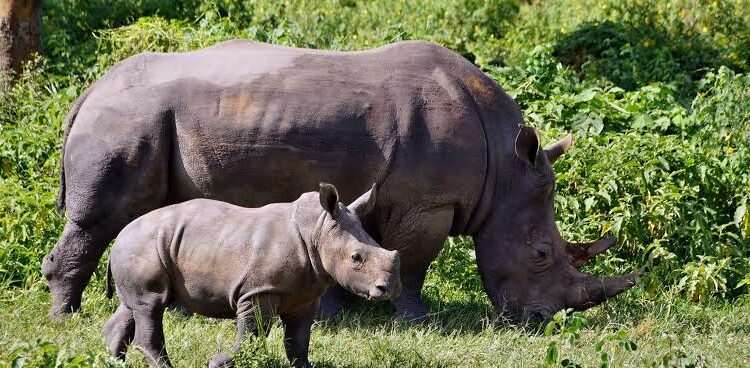An ancient and magnificent creature that has captivated people’s imaginations for centuries roams the vast landscapes of Africa and Asia. The rhinoceros is a living example of the delicate balance of the ecosystems on our planet, and its powerful presence and characteristic horn make it a symbol of prehistoric wonder. Nevertheless, there is a threat to these magnificent creatures’ survival, making rhino conservation more urgent than ever.
The Situation with Rhinos: The main cause of the extraordinary difficulties rhino populations face is human activity. These amazing creatures are in danger of going extinct due to habitat loss, poaching for their horns, and conflicts between humans and wildlife. Due mostly to the false belief that rhino horns have therapeutic qualities, rhino poaching in particular is a profitable and illegal trade that continues to fuel demand throughout the world.
Conservation Efforts:
Thankfully, awareness of the critical need for rhino conservation is growing on a global scale. To save these iconic species and guarantee their continued existence for future generations, communities, governments, and conservationists are working together.
Anti-Poaching Measures: At the forefront of rhino conservation are strong anti-poaching measures. This entails stepping up protected area patrols, deploying skilled ranger units, and utilising technology like drones and infrared cameras. By taking these steps, poachers are discouraged and rhinos are shielded from the harm that illegal hunting causes.
Community Involvement: The success of any plan to protect rhinos depends on involving the local community in conservation efforts. Through the creation of sustainable livelihoods, a sense of ownership, and community involvement in resource management, conservationists can forge a network of allies committed to the protection of rhinos and their habitats.
Translocation and Habitat Restoration: Two of the most important aspects of rhino conservation are moving the animals to safer areas and rehabilitating their natural surroundings. It is possible to guarantee rhino populations can flourish, procreate, and contribute to the general health of the ecosystem by establishing safe and well-managed habitats.
International Cooperation: The protection of rhinos is an issue that affects the entire world and calls for international cooperation. Nations, non-governmental organisations, and environmental groups are collaborating to exchange information, assets, and skills in order to tackle the illicit wildlife trade and safeguard rhino populations worldwide.
Technology’s Place in Conservation:New approaches are being developed in the era of technology to support rhino conservation initiatives. Modern monitoring systems that follow rhino movements and genetic research that aids in population control are just two examples of how technology is proving to be an effective ally in the battle to save these amazing animals.
The Direction to Go: Even though there has been progress, there is still much work to be done to conserve rhinos. In order to expand protected areas, address the underlying causes of poaching, and involve local communities in the stewardship of these endangered species, ongoing efforts are required.
There are various ways that each of us can support the conservation of rhinos individually:
Support Conservation Organisations: Donate money or lend a hand to respectable groups that are committed to the conservation of rhinos.
Raise Awareness: Use social media, local community events, or educational programmes to spread the word about rhinos’ predicament and the value of their conservation.
Select Sustainable Products: Make an ethical purchase by sticking to certified environmentally friendly products and avoiding fueling the market for illicit wildlife products.
Not only are rhinos fascinating mega fauna, but they also serve as a gauge of the state of our planet. Due to the urgency of rhino conservation, everyone must work together to protect these magnificent animals as well as the ecosystems in which they live. By taking action now, we can make sure that rhinoceroses, a symbol of our shared responsibility as stewards of the Earth, will continue to astound future generations with their grace and strength.
Do you have a story in your community or an opinion to share with us: Email us at editorial@watchdoguganda.com













